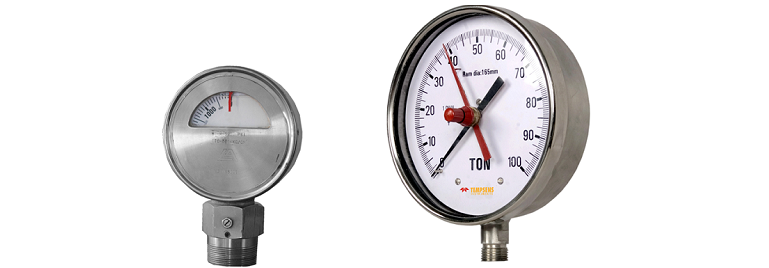
Pressure Gauge is the analysis of an applied force by a fluid (liquid/gas) on a surface. Pressure is typically measured in units of force per unit of surface area. Many techniques have been developed for the measurement of pressure and vacuum. Instruments used to measure and display pressure in an integral unit are called pressure gauges or vacuum gauges. A manometer is a good example as it uses a column of liquid to both measures and indicates pressure. Likewise, the widely used Bourdon tube gauge is a mechanical device which both measures and indicates and is probably the best-known type of gauge. A vacuum gauge is a pressure gauge used to measure pressures lower than the ambient atmospheric pressure, which is set as the zero point.
| Sensing Elements: | Bourdon Tube, Sealed Diaphragm, Compact Sealed Diaphragm, Schaffer Diaphragm, Capsule Diaphragm |
| Dial Size: | 40, 50, 63, 80, 100, 150, 250 mm |
| Range: | Vacuum, Compound, 0....1Kg/cm2 to 0....2100Kg/cm2 |
| Accuracy: | ±1% FSD |
| Over-Range Protection: | 30% above FSD |
| Standard: | IS 3624, EN837 |
| Enclosure Protection: | IP-55, IP-65 (Filled) |
| Connection: | 1/8”, 1/4”, 3/8”, ½” BSP/NPT (M/F) |
Mounting: | Bottom/Back Direct, Bottom Surface, Back panel, BackBracket Mounting |